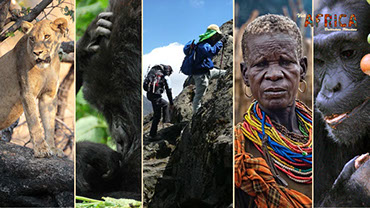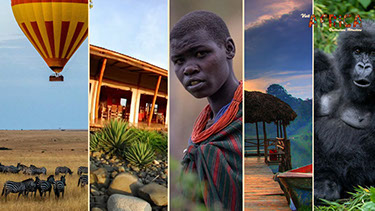Visit South Africa
Visit South Africa
Visit South Africa, a must visit destination, known for several distinct ecosystems, famous for Kruger National Park, beaches, and the flat-topped Table Mountain.
South Africa, Africa's Tourism and Travel Jewel, is a country on the southernmost tip of the African continent, marked by several distinct ecosystems; Inland safari destination Kruger National Park is populated by big game, The Western Cape offers beaches, lush wine-lands around Stellenbosch and Paarl, craggy cliffs at the Cape of Good Hope, forest and lagoons along the Garden Route, and the city of Cape Town, beneath flat-topped Table Mountain.
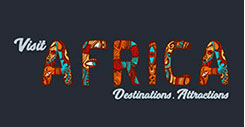
+256 760 038002 | +256 753 456707
info@visitafrica.site
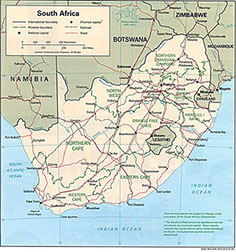
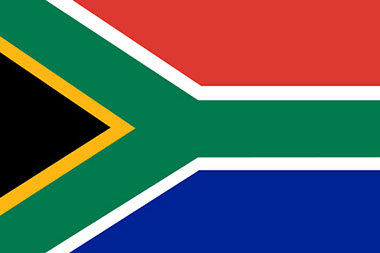
About South Africa
South Africa, officially the Republic of South Africa (RSA), is the southernmost country in Africa. It is bounded to the south by 2,798 kilometres (1,739 mi) of coastline of Southern Africa stretching along the South Atlantic and Indian Oceans; to the north by the neighbouring countries of Namibia, Botswana, and Zimbabwe; and to the east and northeast by Mozambique and Eswatini (Swaziland); and it surrounds the enclaved country of Lesotho.
South Africa is the largest country in Southern Africa and the 24th-largest country in the world by land area and, with over 58 million people, is also the world's 24th-most populous nation. It is the southernmost country on the mainland of the Old World or the Eastern Hemisphere, and the most populous country located entirely south of the equator (although Tanzania is not far behind). About 80 percent of South Africans are of Bantu ancestry, divided among a variety of ethnic groups speaking different African languages, nine of which have official status
Geography
South Africa is located at the southernmost region of Africa, with a long coastline that stretches more than 2,500 km (1,553 mi) and along two oceans (the South Atlantic and the Indian). At 1,219,912 km2 (471,011 sq mi), according to the UN Demographic Yearbook, South Africa is the 24th-largest country in the world. It is about the same size as Colombia, twice the size of France, three times as big as Japan, four times the size of Italy and five times the size of the United Kingdom.
Mafadi in the Drakensberg at 3,450 m (11,320 ft) is the highest peak in South Africa. Excluding the Prince Edward Islands, the country lies between latitudes 22° and 35°S, and longitudes 16° and 33°E.
The Name "South Africa"
The name "South Africa" is derived from the country's geographic location at the southern tip of Africa. Upon formation, the country was named the Union of South Africa in English and Unie van Zuid-Afrika in Dutch, reflecting its origin from the unification of four formerly separate British colonies. Since 1961, the long formal name in English has been the "Republic of South Africa" and Republiek van Suid-Afrika in Afrikaans. Since 1994, the country has had an official name in each of its 11 official languages.
Mzansi, derived from the Xhosa noun umzantsi meaning "south", is a colloquial name for South Africa, while some Pan-Africanist political parties prefer the term "Azania"
Culture
South Africa has a generally temperate climate, due in part to being surrounded by the Atlantic and Indian Oceans on three sides, by its location in the climatically milder Southern Hemisphere and due to the average elevation rising steadily towards the north (towards the equator) and further inland. Due to this varied topography and oceanic influence, a great variety of climatic zones exist. The climatic zones range from the extreme desert of the southern Namib in the farthest northwest to the lush subtropical climate in the east along the border with Mozambique and the Indian Ocean. Winters in South Africa occur between June and August.
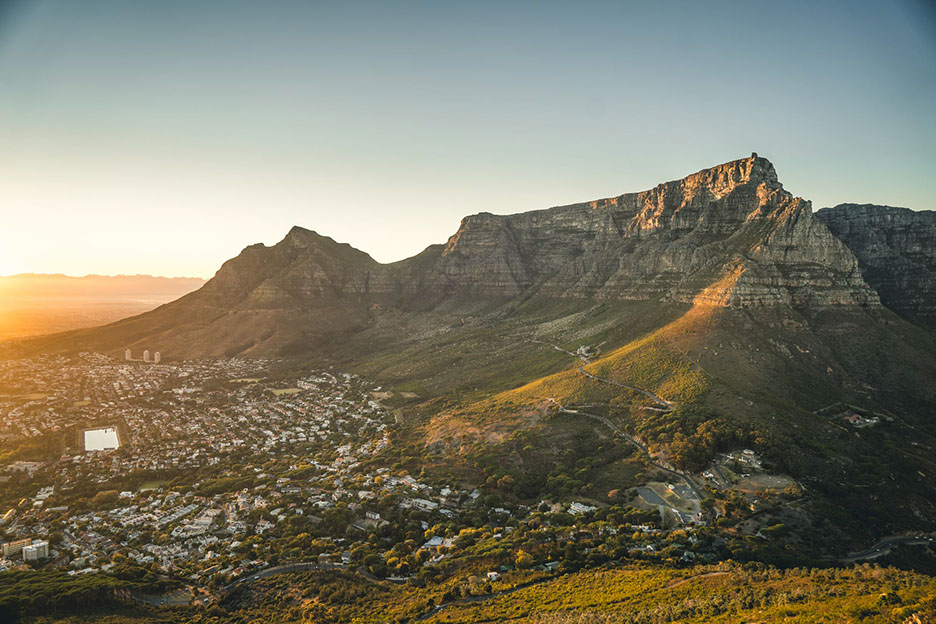
The tip of Africa has been home to the Khoikhoi (collective name for Hottentot (derogatory)), Bushmen (San) and Bantu people for thousands of years. Khoisan or according to the contemporary Khoekhoegowab orthography Khoesān (pronounced: [kxʰoesaːn]), is an artificial catch-all name for the so-called "non-Bantu" indigenous peoples of Southern Africa, combining the Khoekhoen(formerly "Khoikhoi") and the Sān or Sākhoen (also, in Kitchen Dutch: Boesmans, or in English: Bushmen). Rock art believed to be of Khoisan tribes can still be found in many places throughout the South Africa. It is thought that Bantu tribes may have started to slowly expand into the northernmost areas of what is today South Africa more than 2,500 years ago the different cultural groups as we know them today had been established in the areas to the north, east, east central and south east of South Africa. The desert and semi-desert areas of the Western and Northern Cape provinces, as well as the western parts of the Eastern Cape province remained unsettled by the Bantu as the arid climate, limited seasonal rainfall, sparse vegetation, scarcity of natural resources and water could not sustain large migrations of people and herds of cattle.
The regions of the Karoo, Cape Peninsula, the Kalahari, Namaqua, Graqua and Bushman land gradually become "Khoisan" territory in South Africa. In these mostly dry areas, the "Khoisan" being already semi-nomadic, are believed to have not permanently settled as conditions of searching desert game and dwindling water sources during winter months, consequently determined their own migration. Not until the Boer "Voortrekkers" keen to avoid conflict with the Bantu (see next paragraph) came into these areas and established boreholes and containment ponds, could any permanent settlements be established in these regions.
In the southeast, the Zulu Kingdom would grow into a powerful kingdom under King Shaka, who ruled from 1816-1828, and was also known for being a brilliant warrior and military commander.
Today, with more reliable sources of water and modern methods of water conservancy, the agricultural activity remains limited mainly to sheep and ostrich ranching as these animals are better suited to the sparse feed and limited water.
History of South Africa
Getting In
If you are required to have a visa, don't arrive without one, as they are not issued at points of entry. If needed, you can extend your visa in South Africa. With an extension the total amount of time you are allowed to stay is 6 months.
- By Car; Should you be entering from one of the other countries in Southern Africa you might want to do so by car. South Africa operates a number of land border posts between itself and immediately neighboring countries.
- By Plane; South Africa is a major hub for air travel in the Southern African region. The country's flag carrier, South Africa Airways (SAA), has an extensive global and pan-African network of connections, some of which are operated by its short-haul subsidiaries SA Airlink and SA Express
- By Bus
- By Train
- By Boat; Most of the larger cruise lines, such as Princess Cruises offer Cape Town as one of their destinations, but you can also try something different.
Getting Around
- By Plane; South Africa has a well-established domestic air travel infrastructure with links between all major centres. There are multiple daily flights to all the major airports within the country. Contact any of the airlines for details.
- By Car; Driving can be a practical way for getting around in South Africa, for instance national parks are some of the country's foremost attractions but they are rarely served by public transport. Visitors hiring or buying a car is fairly common.
- By Bus; There are scheduled bus services between Cape Town, Johannesburg, Durban and other cities (with stops in between), as well as connections to neighbouring countries.
- By Train; The Passenger Rail Agency of South Africa (PRASA) is the national rail operator. There are budget passenger services between major South African cities (known as Shosholoza Meyl) and luxury services (known as Premier Classe) between Johannesburg, Cape Town and Durban.
- By Bicycle; Cycling is probably the best way to experience the country, as you really get to admire the views and get the opportunity to mingle with the locals. It could be considered unsafe to cycle through the cities because of crime and reckless drivers. However, Cape Town is somewhat bicycle friendly with several bike lanes. There are many farm/dirt roads throughout South Africa.
- By Thumb; Hitchhiking in South Africa is not so hard, but most people will think you are catching a ride with the local taxis and thus expect you to pay. You may want to tell them you are looking for a free ride before climbing aboard.
Language
South Africa has 11 official languages, namely Afrikaans, Southern Ndebele, Xhosa, Zulu, Swazi, Northern Sotho, Southern Sotho, Tswana, Tsonga, Venda and English. Afrikaans is the mother tongue of the majority of the white and coloured population. Often Afrikaans is incorrectly called 'Afrikan' or 'African' by foreigners. This is very incorrect as 'African' for a South African corresponds with the native-African languages: Zulu, Xhosa, Pedi, etc. (and, of course, there are thousands of languages in Africa so no single language can be called 'African') Afrikaans has roots in 17th century Dutch dialects, so it can be understood by Dutch speakers and sometimes deciphered by German speakers. Other widely spoken languages are Zulu (mainly in KwaZulu-Natal - South Africa's largest single linguistic group) and Xhosa (mainly in the Western Cape and Eastern Cape), Sotho and Venda. This changes, according to the region you are in.
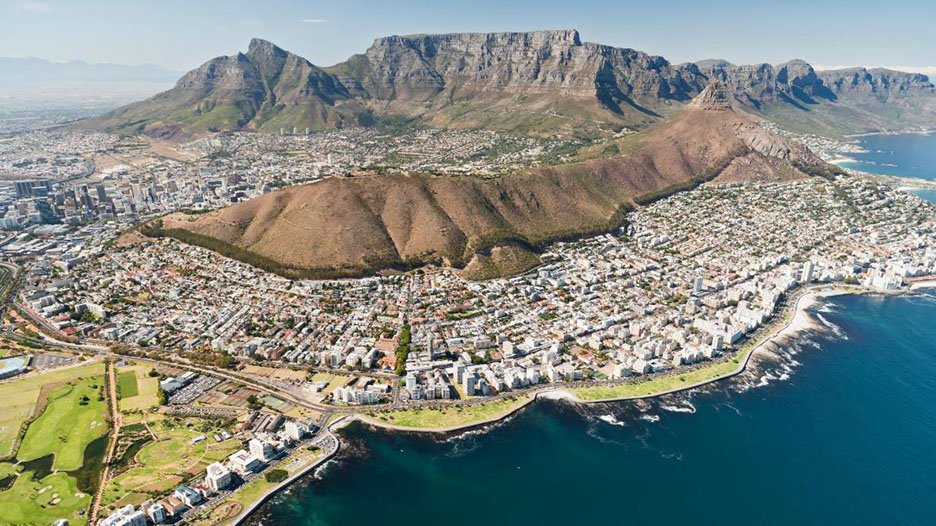
National Parks
Attractions (What to See)
Hundreds of thousands of visitors come to South Africa every year to see the country's many natural and cultural attractions. From wild elephants to stunning landscapes, cave paintings, colonial heritage and bustling townships, South Africa is an enchanting land of contradictions and great beauty. Some of the best ways visitors can explore South Africa's natural scenic and cultural experiences, apart from private run enterprises, are provided by state-developed entities such as the various Provincial Park Boards and National Nature Reserves.
- Wildlife; South Africa is the most popular safari destination in the world and for many visitors a glance at the "Big Five" and other wildlife is a must. The iconic Kruger National Park in Mpumalanga is surely the most famous place to have that glance, but Addo Elephant National Park in the Eastern Cape is another popular pick. The vast dry plains of the Kgalagadi Transfrontier Park with its migratory herds of wildebeast covers parts of both South Africa and Botswana. Along the border with Mozambique another transfrontier park, the iSimangaliso Wetland Park, offers very different landscapes and fauna. For scuba divers, South Africa's underwater wildlife has a lot to offer, with the annual sardine run being a highlight. The popular seaside town of Hermanus is probably the best place in the world to go whale watching, with cage diving opportunities with great white sharks for the truly adventurous.
- Botanical Nature; South Africa's landscapes are grand and diverse, varying from flat desert scrublands to lush green coastal areas and high peaks. The view from the famous, flat-topped Table mountain is a classic Africa experience. Also in the Cape Town region, the beautiful beaches attract thousands of sun lovers. The green coastal Garden Route is a great natural experience, passing countless lagoons, several interesting towns and the beautiful Tsitsikamma National Park. The Augrabies Falls National Park boasts a 60-m-high water fall. Close to the Kruger Park is God's Window and Blyde River Canyon, the largest green canyon in the world, not far from there are the high peaks of the Drakensberg mountain range. The Ukhahlamba Drakensberg Park is one of the country's 8 Unesco World Heritage sites for its exceptional natural beauty and the many cave paintings found there. The Namaqualand transformation from a dry monochromatic landscape into a colourful myriad of flowering during spring season, is a sight to behold, but there are many others including areas of the Kalahari desert, where stubborn endemic life forms defy the harsh environment and thrive.
- Cultural Heritage; Large numbers and some of the oldest hominid fossils have been found in South Africa, especially in the Cradle of Humankind, another World Heritage Site. Over 30 different caves held important fossils, but the caves of Sterkfontein are perhaps the most important one at the site. Far more recent, the 17th-century Castle of Good Hope in beautiful Cape Town is one of the cultural heritage sites from colonial times. Robben Island, where Nelson Mandela was famously imprisoned, has become a major destination. For more insight in the Apartheid times, visit the District Six Museum in Cape Town or the Apartheid museum in Johannesburg.
Things to Do
- Hot air ballooning, the "Cradle of Mankind" in Gauteng near Johannesburg, KwaZulu-Natal and the Western Cape offer some spectacular balloon safaris. Booking arrangements can be made through a variety of operators easily found online.
- River rafting: The Orange River on the border to Namibia is a popular destination for rafting tours. Several tour operators launch 4-6 day trips in blow-up boats from Vioolsdrif with camping under the stars.
- Hiking and mountaneering are very popular in the Highlands of KwaZulu-Natal and in certain areas of the Eastern and Western Cape. Advance bookings may be essential to secure a place as some eco-sensitive places allow only a limited number of people to visit per year.
- Rugby Union, Cricket and soccer are all popular spectator sports, traditionally associated with Afrikaner, Anglo-South African and black South African culture respectively, although this has changed, and the Springboks (national Rugby union team) has had a lot of black fans at least since the 1995 World Cup, hosted in South Africa, when South Africa won with Nelson Mandela (then president) in attendance wearing a Springbok jersey.
- Friends of the Rail are based in Pretoria. This non-profit preservation society looks after steam locomotives and period rolling stock. Steam train outings are organized regularly departing in the morning from their own station in Hermanstad, Pretoria, and arriving in Cullinan for an extended stop over allowing sufficient time for lunch or a picnic before returning to base in the afternoon.
- The Magaliesberg steam train is another vintage steam train trip, operated by South African Railways (Transnet). It departs Johannesburg's main Park Station in the morning once or twice per month, offering a day long scenic tour through the nearby Magaliesberg Mountains. A packed lunch or picnic basket is essential.
- Battle sites: Many well documented Zulu-Indigenous, Boer-Indigenous, Zulu-British and Boer-British war sites are well kept, easy to access and worthwhile a visit. Mostly found in the KwaZulu-Natal Province, The War Museum in Johannesburg can provide maps and literature to help one plan a tour of where to go.
- Self-driving tours: Due to the size of the country and well developed extent of the national road network, a practical and fulfilling way of seeing the country is by driving through. The natural beauty of areas like "Golden Gate", "God's Window", "The Garden Route", "The Wild Coast", "St. Lucia and Cape Vidal", offer the leisurely vacationer unskeptic to mingle with locals or stay in farmsteads, a wide variety of tinkling sensations not experienced any other way.
- Motor racing in Gauteng is a regular calendar event, with Kyalami and Swartkops raceway facilities being among others, the main backdrops for all sorts of top notch national and regional two and four wheel competitions.
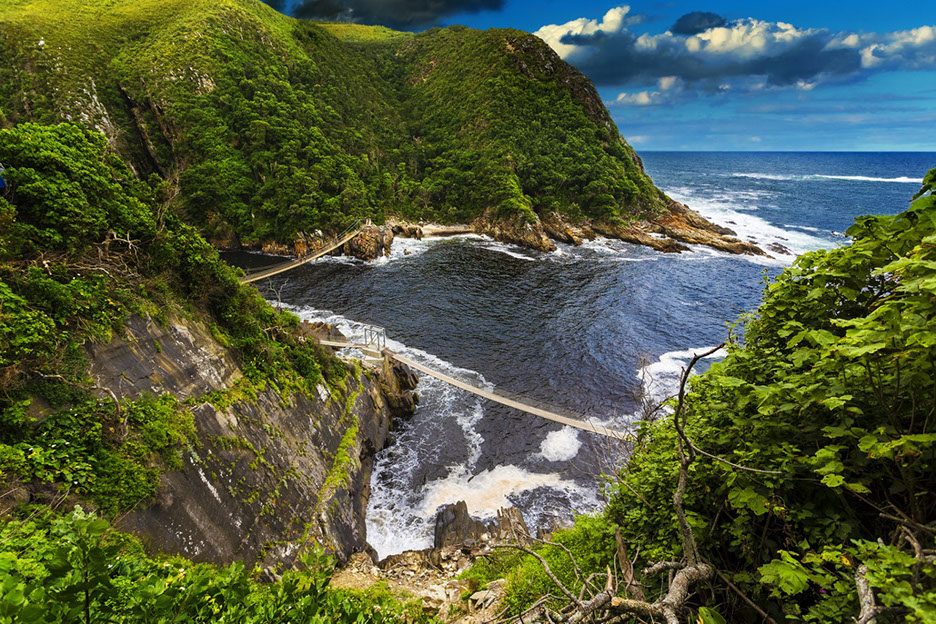
Where to Stay (Accommodation)
- Backpacker Lodges; Backpacking lodges or hostels are widespread all over the country. Most establishments offer great value tours and activities in the areas. There is a great network of transport around the country making it suitable for single and younger travellers. Some lodges provide meals especially in the more remote areas. Most have self-catering facilities and shared bathrooms although en-suite bathrooms are also common.
- B&Bs; Bed and Breakfast establishments are becoming very popular. The accommodation is usually provided in a family (private) home and the owner/manager lives in the house or on the property. Breakfast is usually served. Bathroom facilities may be en-suite. In general, the guest shares the public areas with the host family.
- Self-catering; A house, cottage, chalet, bungalow, flat, studio, apartment, villa, houseboat, tents or similar accommodation where facilities and equipment are provided for guests to cater for themselves. (This can include a fridge, oven, stove, and microwave.) The facilities should be adequate to cater for the maximum advertised number of residents the facility can accommodate.
- Guest house; A guest house is a converted house or manor adapted to accommodate overnight guests or it may be a purpose built facility. A guest house is run as a commercial operation and is often owner-managed. A guest house has areas which are for the exclusive use of the guest. The owner/manager either lives off-site, or in a separate area within the property.
- Camping and caravaning; Caravan parks can be found in most towns that are holiday destinations. Most caravan parks also offer camping sites where you can pitch a tent.
- Timeshare; There are many timeshare resorts in South Africa, most participate in international exchange agreements. Many timeshare owners also rent their time when they can not make use of it.
- Long-term; Many real estate agents in South Africa also offer rental services. The rental properties are mostly available on unfurnished long term lease, but you will also find furnished properties on offer with 1 to 12-month lease agreements
Join Visit Africa on a Journey into breathtaking South Africa
Visit Africa's Tourism Events
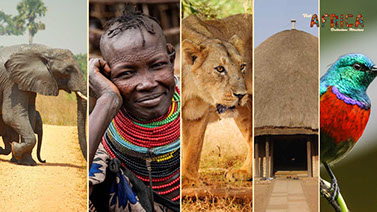
Uganda Wildlife, Nature, City life & Cultural Tourism Event Experience
8 days | 3 Major Destinations | 6-25 Travellers
From $1,800
Architect Tourism SMC Ltd is an African tourism company, crafted to inspire and enable a breathtaking beautiful experience of Africa. Visit Africa is one of Architect Tourism SMC tourism brands. Visit Africa is inspired to craft innovative, fun and breathtaking tourism events, trips, excursions, getaways, safari, vacations, holiday, and tours experiences.
Vision: To inspire, craft, and enable a breathtaking beautiful experience of Africa.
Our Values: African, Oneness, Integrity, Client focused, Conservation focused, Innovative, Excellence, Simplicity.
Company Registration Number: 80020002986484 | Company Tax ID: 1018106912

Visit Africa is an African tourism brand, that profiles every tourist destination, in every country, in Africa; Destinations, How to get there, Attractions, Things to do, How to get around, itinerary pricing and Where to stay, for an adventurous breathtaking and thrilling experience of tourism of Africa.
Visit Africa
Destinations
Visit Namibia
We are Social!
Search this website!
Africa
Visit Africa
Visit Uganda
Visit Tanzania
Visit Zimbabwe
Visit South Africa
Visit Kenya
Visit Morocco
Tour Itineraries
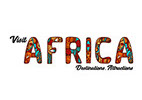
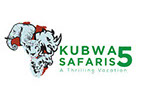









Visit Africa Copyright © 2019 - Visit Africa is a Tourism Brand of Architect Tourism SMC Limited.
Wildlife in Africa
Visit Egypt

Visit Rwanda

